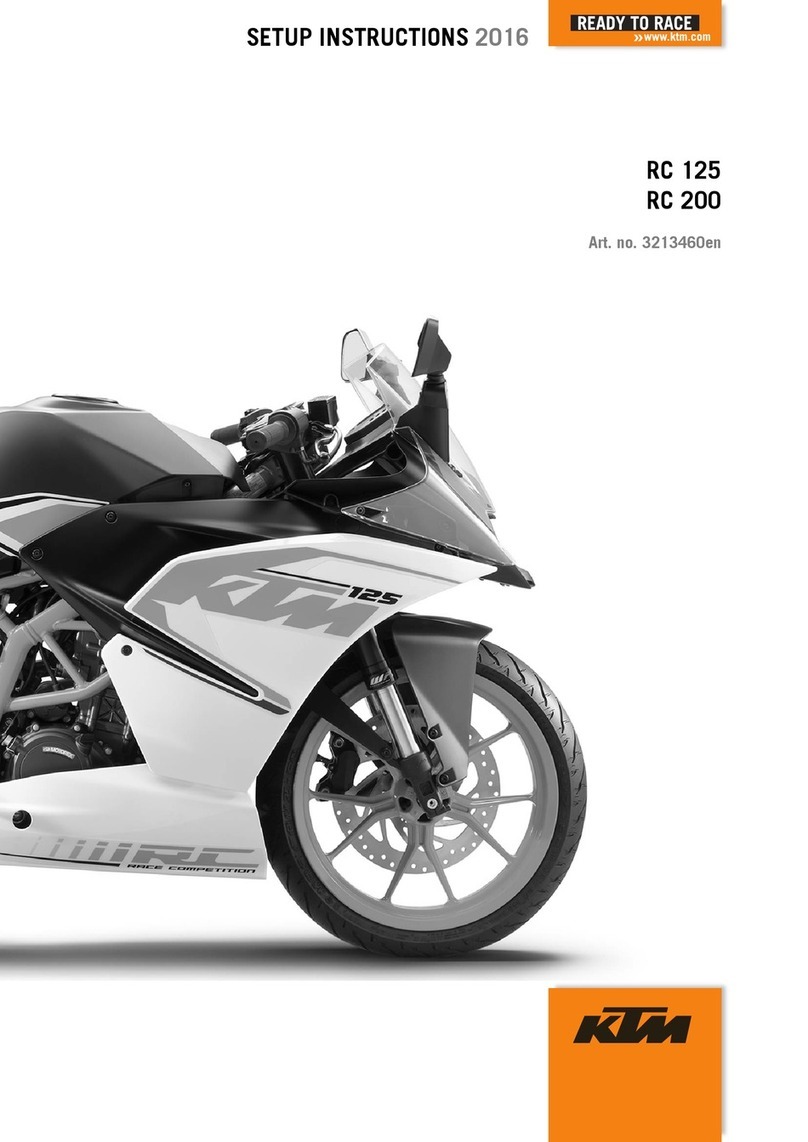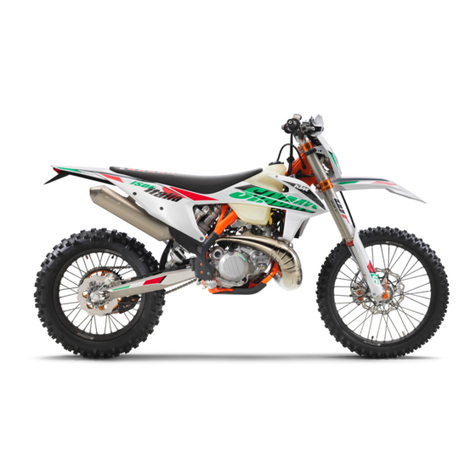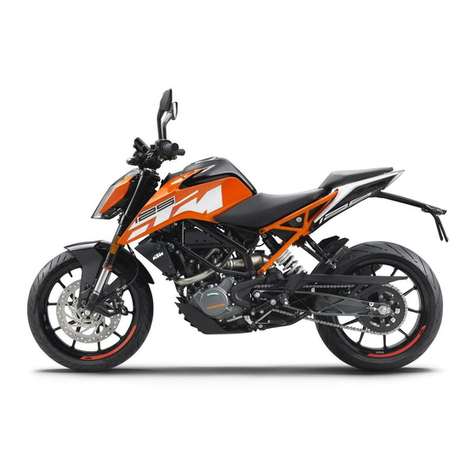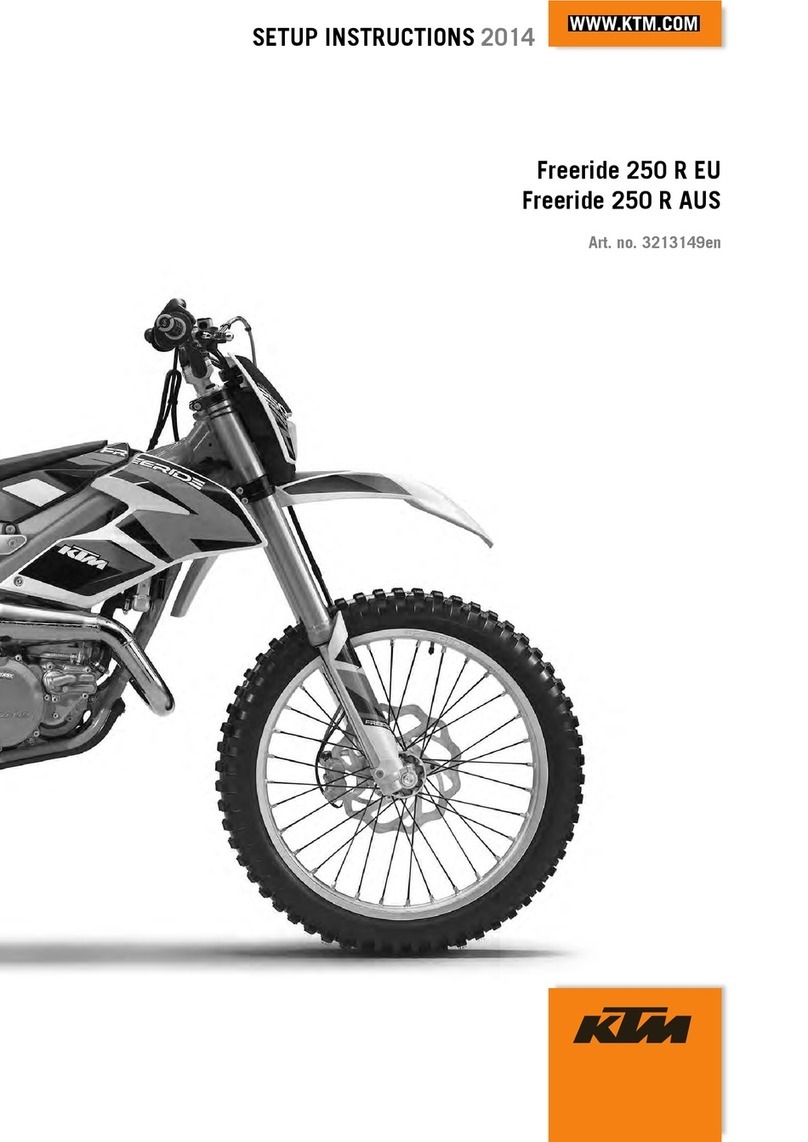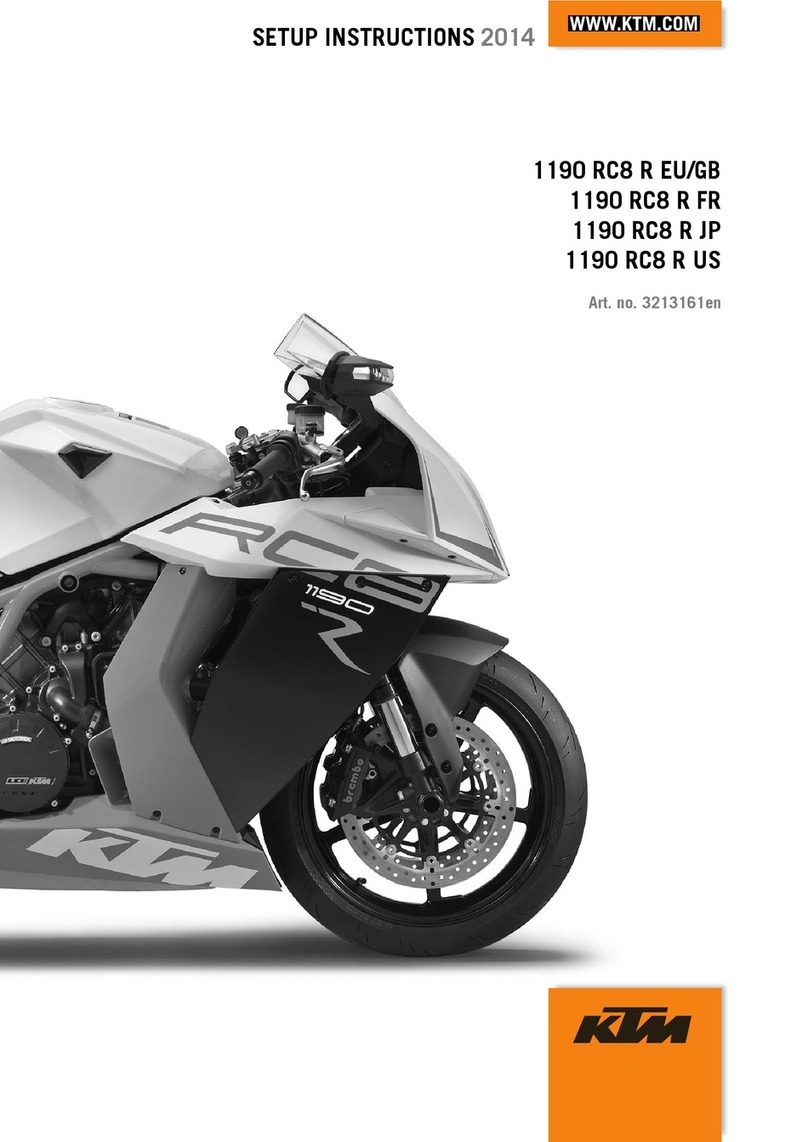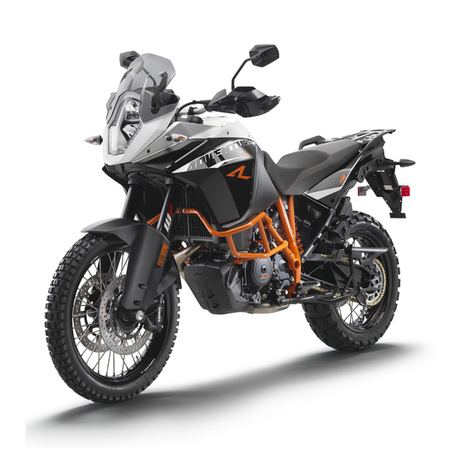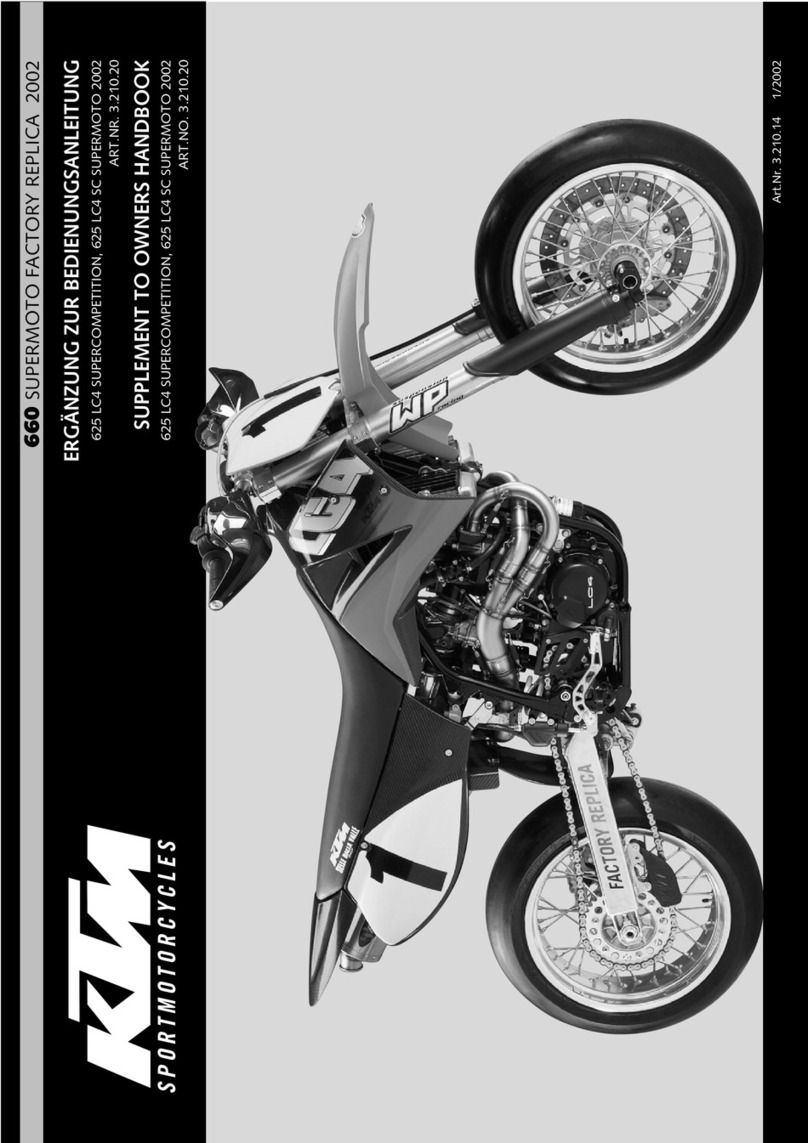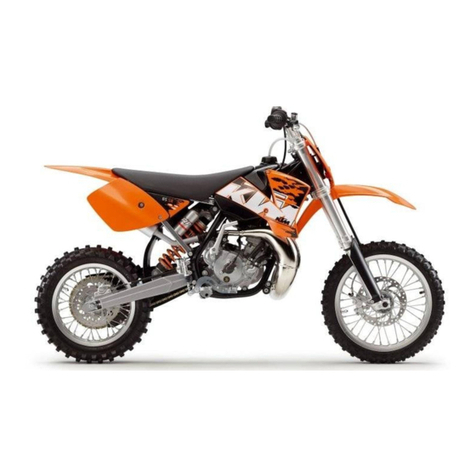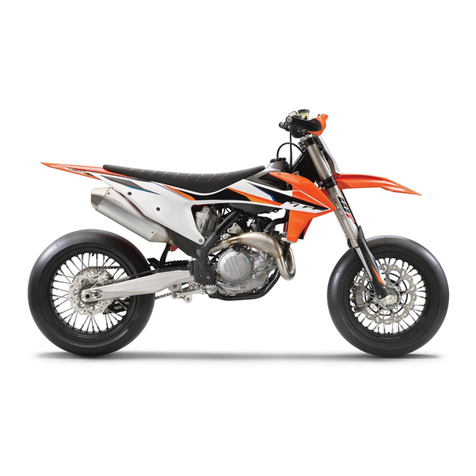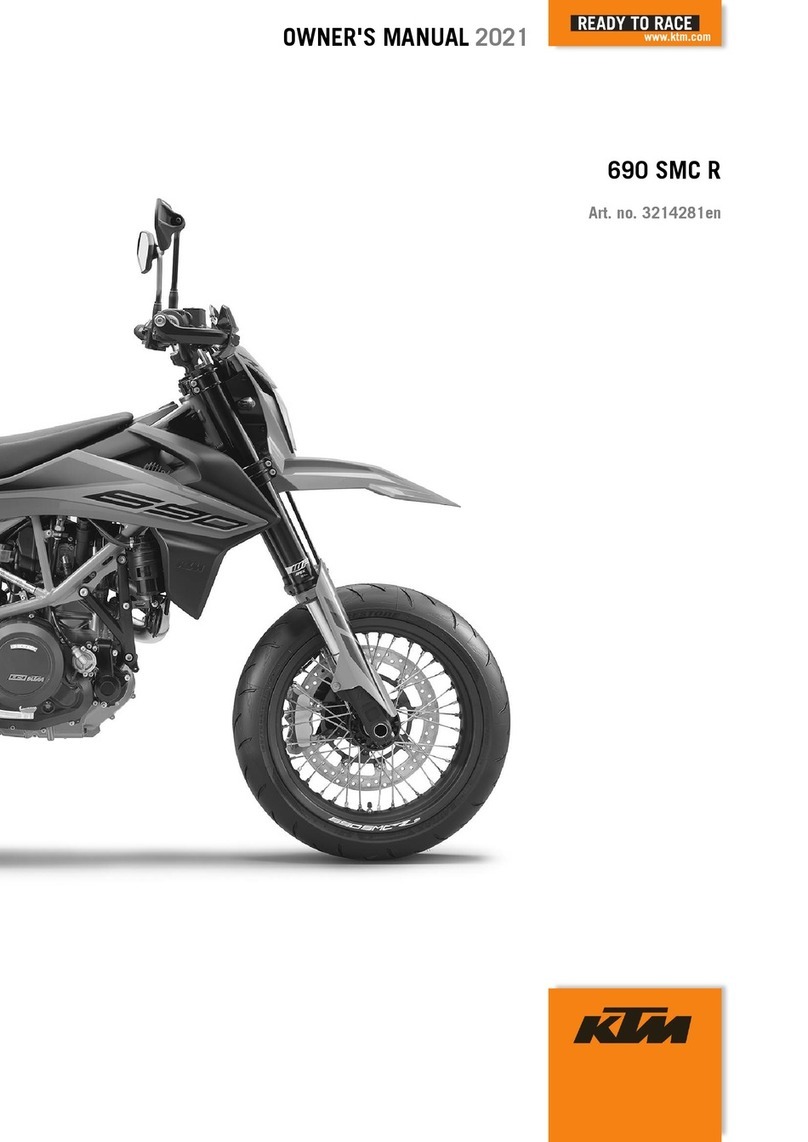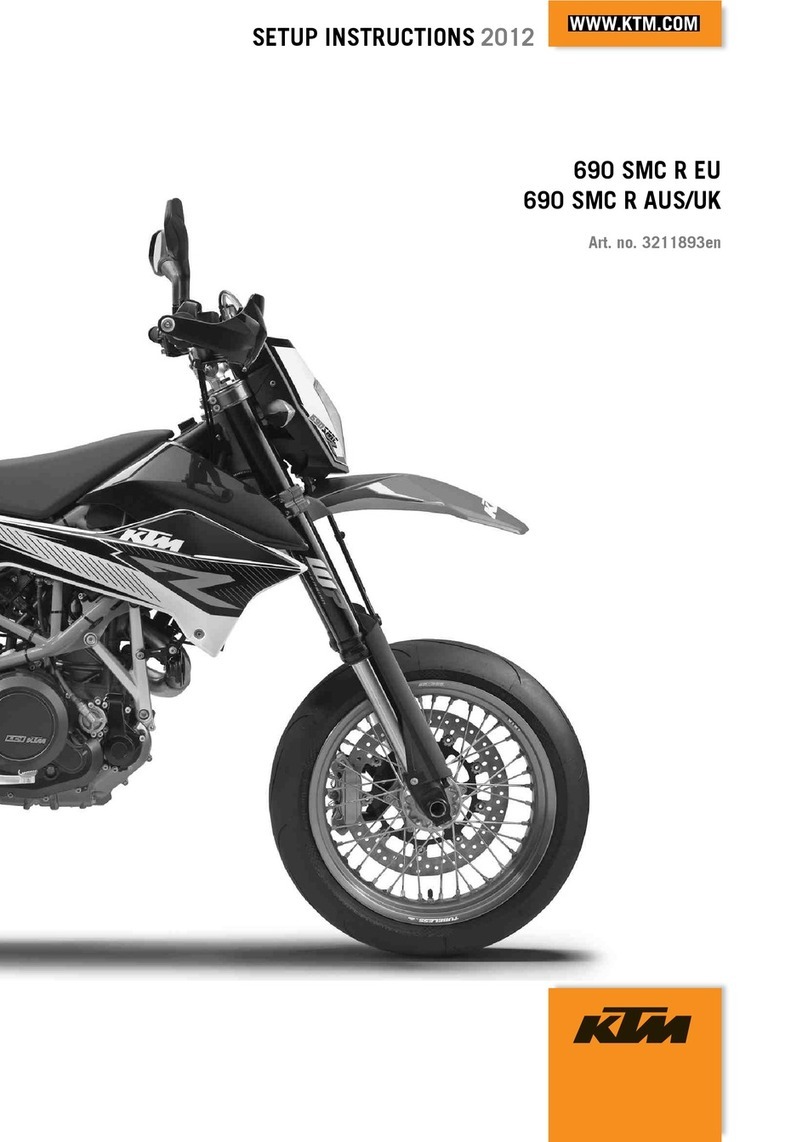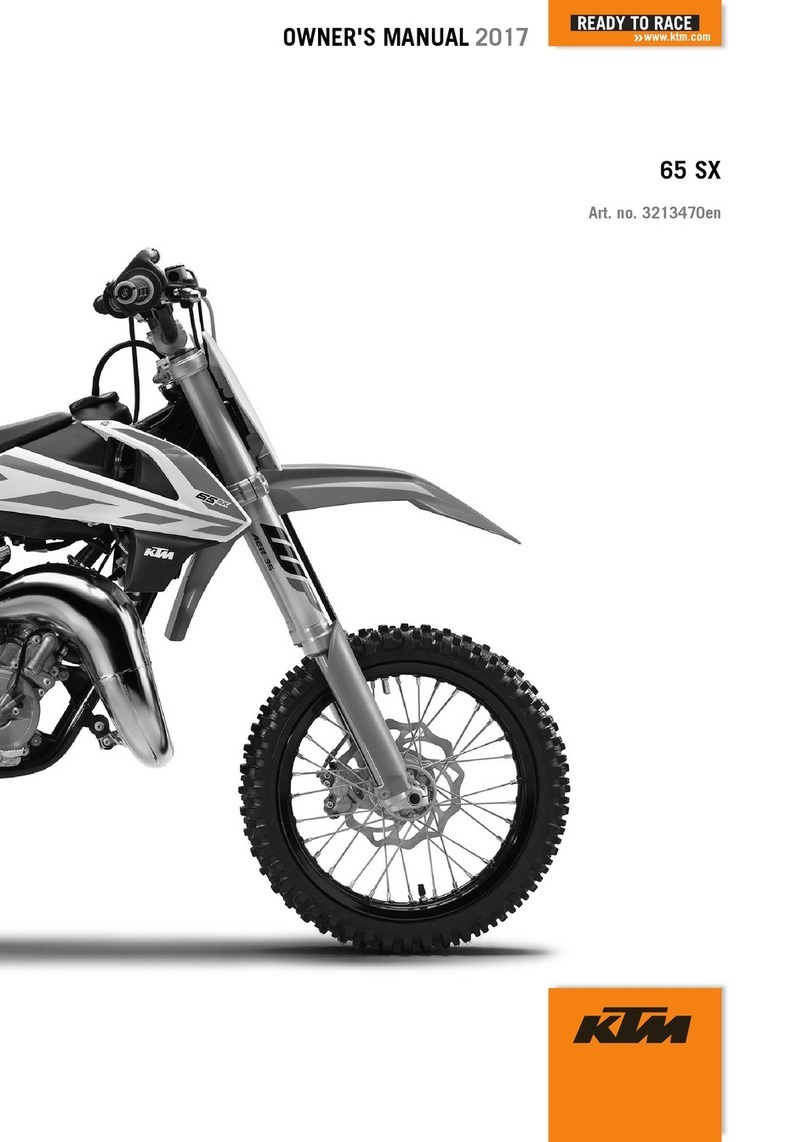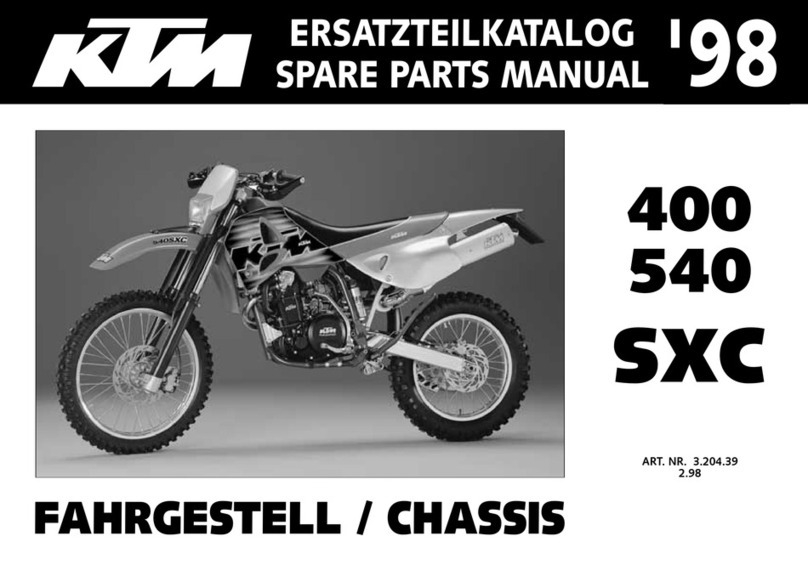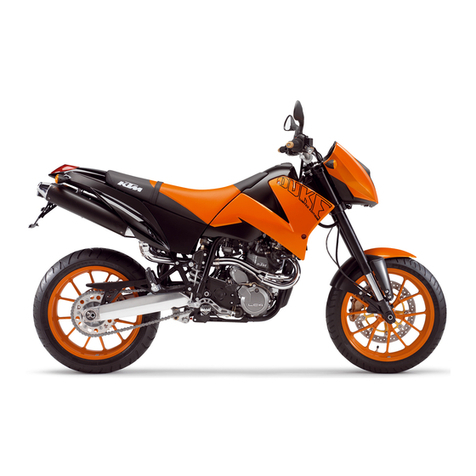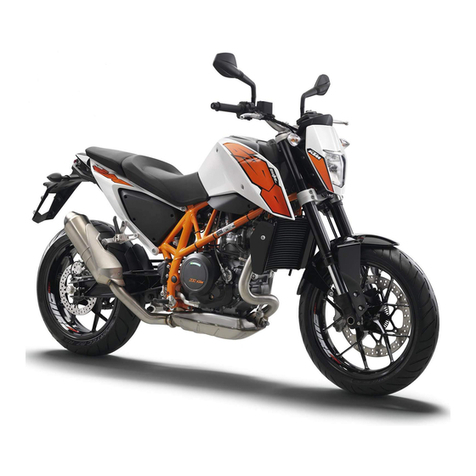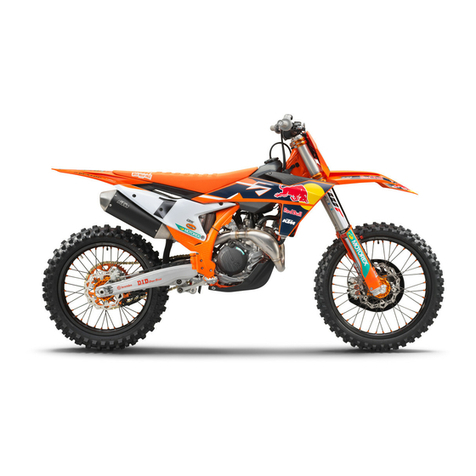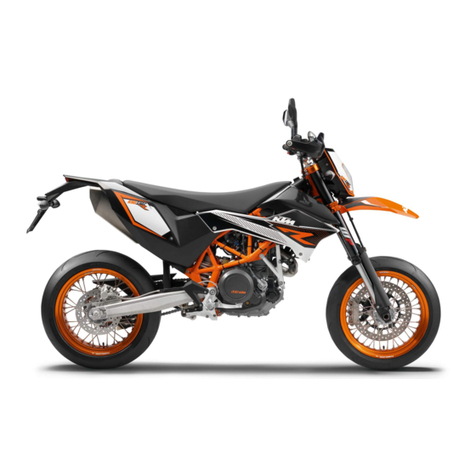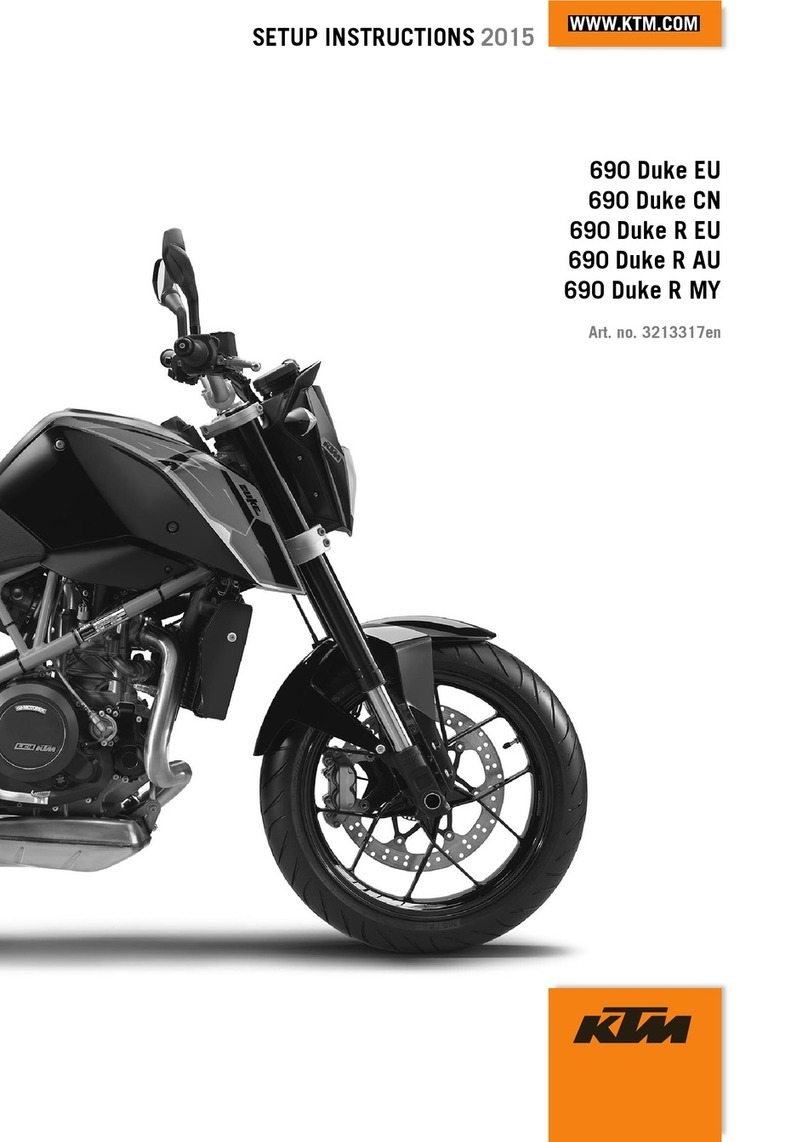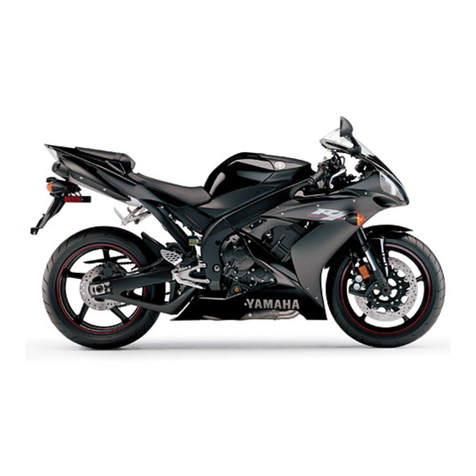
TABLE OF CONTENTS
4
6.5 Switches on the right side of the
handlebar........................................ 33
6.5.1 Emergency OFF switch/electric
starter button .............................. 33
6.6 Ignition/steering lock........................ 34
6.7 Opening the filler cap....................... 35
6.8 Closing the filler cap ........................ 37
6.9 Seat lock......................................... 38
6.10 Tool set........................................... 38
6.11 Grab handle .................................... 39
6.12 Passenger foot pegs ......................... 39
6.13 Shift lever ....................................... 40
6.14 Foot brake lever ............................... 41
6.15 Side stand....................................... 41
7 COMBINATION INSTRUMENT ..................... 43
7.1 Combination instrument ................... 43
7.2 Activation and test ........................... 43
7.3 Day-Night mode............................... 45
7.4 Warning notes.................................. 46
7.5 Indicator lamps................................ 48
7.6 Display ........................................... 52
7.7 TRACK display................................. 54
7.8 Shift warning light ........................... 55
7.9 Fuel level display ............................. 56
7.10 Time............................................... 57
7.11 Coolant temperature indicator ........... 57
7.12 Trip distance counter ....................... 58
7.13 Menu.............................................. 59
7.13.1 Favorites ..................................... 59
7.13.2 Trip 1 ......................................... 60
7.13.3 Trip 2 ......................................... 61
7.13.4 General Info ................................ 62
7.13.5 Settings ...................................... 63
7.13.6 Bluetooth®(optional).................... 63
7.13.7 Distance ..................................... 64
7.13.8 Temp.......................................... 65
7.13.9 Pressure ..................................... 66
7.13.10 Fuel Cons.................................... 67
7.13.11 Language .................................... 68
7.13.12 Clock/Date .................................. 68
7.13.13 DRL ........................................... 69
7.13.14 TPMS warning ............................. 71
7.13.15 Quick Selector 1.......................... 72
7.13.16 Quick Selector 2.......................... 73
7.13.17 Set Favorites ............................... 74
7.13.18 Service ....................................... 75
7.13.19 Extra functions ............................ 75
7.13.20 Warnings..................................... 76
7.13.21 Ride Mode .................................. 77
7.13.22 Track.......................................... 78
7.13.23 Anti‑wheelie mode ....................... 79
